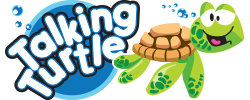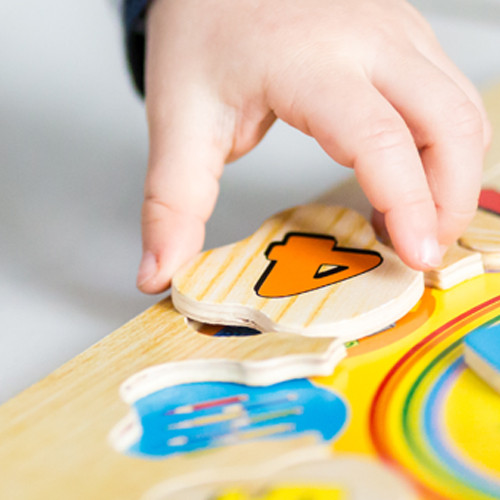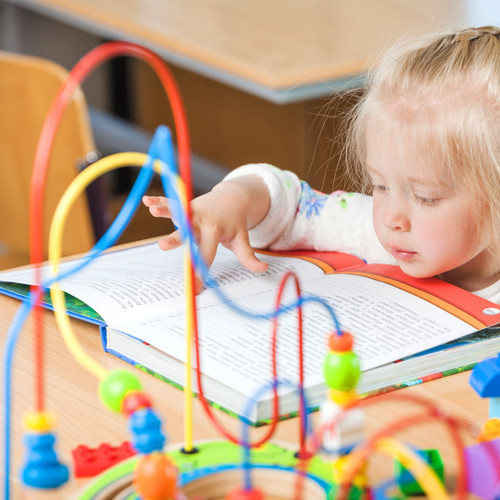Elevating Early Years Education Through Mark Making and Creative Expression
As a provider of early years resources, you understand the importance of fostering children's growth and development during their crucial early years. And one of the most effective ways to do this is by providing children with opportunities to explore their creativity through art.
In this blog post, we're going to explore what mark making is and how using mark making tools and techniques can support early childhood development, helping children to unlock their full potential.
From encouraging self-expression to promoting problem-solving skills, we'll show you the many benefits of incorporating art and creativity into your early years education.
So, let's dive in.
What is mark making?
Mark making is simply the act of creating marks, lines, and patterns using different tools and materials.
It's an essential aspect of early childhood development as it helps children develop fine motor skills, hand-eye coordination, and creativity.
By providing children with opportunities to explore different mark making tools and materials, early years providers can support children's growth and development in a fun and engaging way.
Incorporating mark making activities into your early years curriculum can help children explore their creativity, develop essential skills, and have fun in the process. Examples of mark making activities include drawing, painting, coloring, and using sensory materials such as playdough or shaving cream to create marks.
Overall, mark making is a fundamental aspect of early years education that supports children's growth and development in many different ways.
Encourages self-expression
Many mark making products provide children with a safe and non-judgmental way to express themselves.
Unlike other areas of their lives where they may feel pressure to conform or meet certain expectations, art provides children with the freedom to create whatever they want, using whatever materials they choose.
This can be incredibly empowering for young children and can help them to build confidence in their own ideas and abilities.
In addition to providing a non-judgmental space, it's also important to encourage children to explore different colors, textures, and shapes.
This can help to develop their creativity and imagination and provide them with a variety of tools to express themselves.
Here are some tips for encouraging self-expression in your early years classroom:
● Provide a variety of mark making tools and materials, such as paints, crayons, markers, and chalks, to give children the freedom to choose what they want to use.
● Create a space where children can explore and experiment with mark making products without fear of judgment or criticism.
● Display children's artwork prominently in the classroom to show that their work is valued and appreciated.
● Encourage children to talk about their artwork, expressing their thoughts and feelings about what they have created.
● Celebrate diversity by encouraging children to create artwork that reflects their unique cultural backgrounds and experiences.
By following these tips, you can help create a safe and nurturing environment where children feel free to express themselves creatively and explore their full potential no matter their skill level.
Develops fine motor skills
Holding and manipulating different mark making tools, such as pencils, paintbrushes, and crayons, can help rapidly improve hand-eye coordination, dexterity, and control.
These skills are crucial for everyday activities, such as writing, buttoning clothes, and using utensils.
So to encourage the development of fine motor skills in your early years classroom, you can:
● Provide a variety of mark making tools with different shapes, sizes, and textures to help children practice holding and manipulating objects.
● Encourage children to use both their dominant and non-dominant hands when creating artwork to develop coordination and control in both hands.
● Provide opportunities for children to engage in activities that require them to use their fine motor skills, such as cutting paper or molding clay.
● Model proper grip and hand position when using mark making tools, and encourage children to do the same.
By providing children with opportunities to practice using mark making tools and techniques, you can help them develop the fine motor skills they need to succeed in many areas of their lives.
Promotes problem-solving skills
Art and creativity provide children with opportunities to develop problem-solving skills. When children engage in art activities, they are often presented with challenges or obstacles that require them to think creatively and outside the box to find a solution. This type of problem-solving is essential for success in many areas of life, including academics, work, and personal relationships.
To promote problem-solving skills in your early years classroom, you can:
● Encourage children to experiment with different mark making tools and materials to find creative solutions to artistic challenges.
● Provide open-ended art activities that require children to think critically and come up with their own solutions.
● Encourage children to ask questions and seek answers through their artwork, such as "How can I make this color lighter?" or "What can I do to make this texture more realistic?
● Encourage collaboration and teamwork among children to solve artistic challenges together.
By providing opportunities for children to think creatively and solve problems through art, you can help them to develop essential skills that will serve them well throughout their lives. So let's get creative and watch these young minds solve some of the most unexpected problems!
Teaches literacy and numeracy skills
Mark making products can be used to support early literacy and numeracy skills in children. Art activities provide opportunities for children to practice writing, counting, and storytelling, among other skills.
To incorporate literacy and numeracy skills in your early years classroom using mark making products, you can:
● Encourage children to practice writing their names or letters of the alphabet using different mark making tools and materials.
● Incorporate counting games into art activities, such as counting the number of dots or lines used in a drawing.
● Use art as a way to support storytelling activities, such as having children draw pictures of characters or scenes from a story they have heard.
● Provide opportunities for children to explore letters and numbers through art, such as using stencils or stamps to create patterns or shapes.
By incorporating literacy and numeracy skills in art activities, you can help children to develop these essential skills in a fun and engaging way.
So let's grab those mark making tools and start exploring the exciting world of literacy and numeracy!
Conclusion
In conclusion, using mark making products in early years education can have many benefits for children's growth and development. From encouraging self-expression to promoting problem-solving skills and incorporating literacy and numeracy skills, art and creativity can unlock the full potential of young minds.
So, Let's provide children with opportunities to explore their creativity and express themselves in a safe and non-judgmental way. By doing so, we can help children to reach their full potential and become confident, well-rounded individuals.
Thank you for reading this blog post, and we hope it has inspired you to incorporate more art and creativity into your early years education.
Let's get creative! - Mark-making tools - Click Here:




